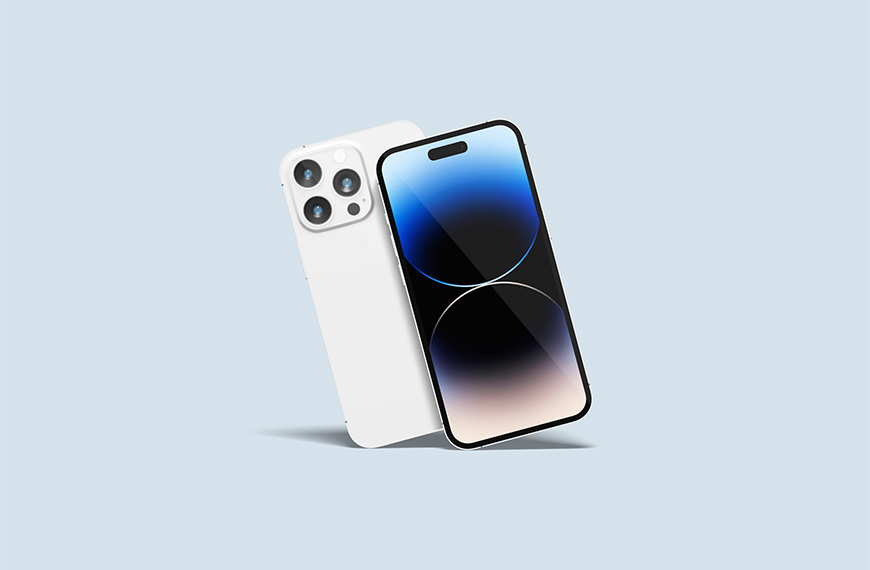In the realm of graphic design, creating intuitive and user-friendly interfaces for mobile applications is paramount. Virtual keypads play a significant role in facilitating user input and interaction within mobile interfaces, making it essential for designers to test their effectiveness and usability. In this blog post, we’ll explore the importance of testing interaction with virtual keypads in phone mockups for graphic designers.

Simulation of Real-World User Scenarios
Virtual keypads emulate the functionality of physical keyboards or input methods on mobile devices. Whether it’s entering text, numbers, or special characters, virtual keypads enable users to interact with applications and input information effectively. Testing interaction with virtual keypads in phone mockups allows designers to simulate real-world user scenarios and evaluate the keypad interface’s responsiveness, accuracy, and ease of use.
Assessment of Key Placement and Size
The placement and size of keys on a virtual keypad significantly impact user experience and input accuracy. Designers must assess critical placement to ensure that commonly used keys are easily accessible and users can navigate the keypad interface comfortably. Additionally, key size is crucial in preventing misclicks and enhancing typing speed. Testing interaction with virtual keypads enables designers to evaluate the effectiveness of critical placement and size and make necessary adjustments to optimize usability.
Evaluation of Feedback and Visual Cues
Virtual keypads should give users clear feedback and visual cues to indicate key presses and input actions. Visual feedback, such as crucial highlighting or animation, enhances the responsiveness and intuitiveness of the keypad interface. Designers must evaluate the effectiveness of feedback mechanisms and visual cues in guiding user interaction and providing a seamless typing experience. Testing interaction with virtual keypads allows designers to identify areas where feedback may be lacking or where visual cues may need improvement.
Consideration of User Preferences and Accessibility
User preferences and accessibility considerations are crucial in designing virtual keypads that cater to diverse user needs and preferences. Designers should consider factors such as customizable key layouts, predictive text input, and support for alternative input methods to enhance usability and accessibility. Testing interaction with virtual keypads enables designers to gather insights into user preferences and accessibility requirements, ensuring that the keypad interface is inclusive and adaptable to a wide range of users.
Integration with Gesture-Based Input
In addition to traditional keypad input, modern mobile interfaces often incorporate gesture-based input methods for enhanced user interaction. Virtual keypads should seamlessly integrate with gesture-based input to provide users with flexible and intuitive options. Designers must test interaction with virtual keypads to ensure compatibility with gesture-based input methods such as swipe typing, gesture shortcuts, and predictive text input. By evaluating the integration of virtual keypads with gesture-based input, designers can create cohesive and versatile interfaces that accommodate diverse user preferences and interaction styles.
Iterative Design and Optimization
Testing interaction with virtual keypads is an iterative process that requires continuous refinement and optimization based on user feedback and usability testing results. Designers should iterate on the keypad interface, incorporating insights gathered from testing to improve usability, responsiveness, and overall user experience. Through iterative design and optimization, designers can create virtual keypads that meet user expectations, enhance productivity, and facilitate seamless interaction within mobile applications.
Conclusion
In conclusion, testing interaction with virtual keypads is essential for creating intuitive and user-friendly interfaces in phone mockups for graphic designers. By assessing critical placement and size, evaluating feedback and visual cues, considering user preferences and accessibility, integrating with gesture-based input, and embracing iterative design and optimization, designers can create virtual keypads that enhance usability, productivity, and overall user experience in mobile applications. Through thoughtful testing and refinement, graphic designers can leverage virtual keypads to create interfaces that resonate with users and facilitate seamless interaction in the mobile landscape.
| Author | Graphic Aesthetic |
| File Type | .psd |
| Layered | Yes |
| Smart-Object | Yes |
| License | Commercial Use |







